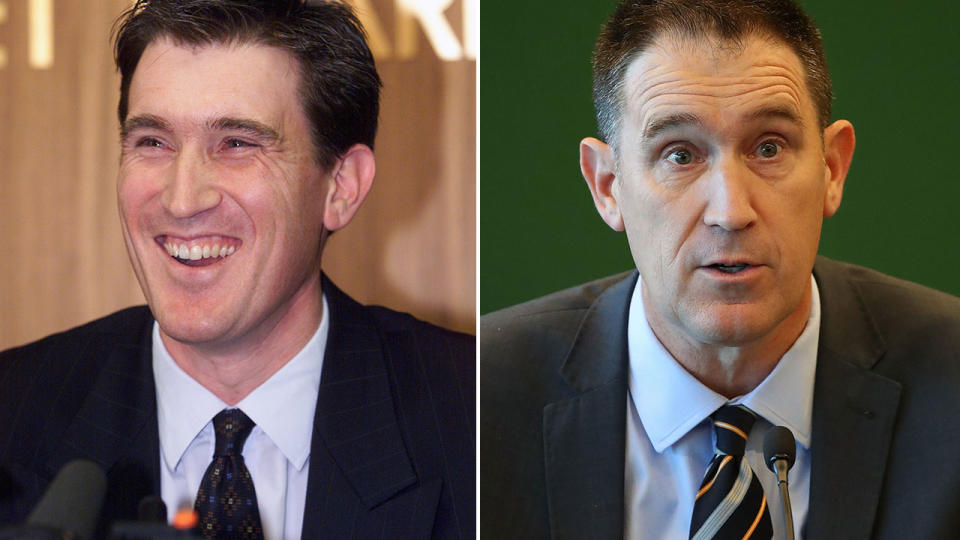Australian cricket's six key moments under James Sutherland
James Sutherland has announced he intends to leave his role as Cricket Australia chief executive next year.
In the role since 2001, the administrator’s big decision comes at the end of a tumultuous 12-month period on and off the field.
Australia regained the Ashes with a 4-0 victory over England but lowlights have dotted the history books before and after that series.
Beginning with a 2003 controversy, here are six key moments in Sutherland’s tenure.
SHANE WARNE’S POSITIVE TEST
On the eve of Australia’s first Cricket World Cup campaign since Sutherland took over, Shane Warne returned a positive drug test. Warne put the blame on his mum, and Sutherland was forced to front what is still the biggest press conference of his time in charge to announce that the nation’s greatest spinner had been handed a one-year ban.
BIG BASH LEAGUE
Australian cricket wasn’t the first to hop on the Twenty20 bandwagon but the Big Bash League has revolutionised the domestic game. Transformed from a state-based competition to a league with eight franchises based in the six major capital cities, the BBL has brought more families and children to the game than ever before.
THE DEATH OF PHILLIP HUGHES
The entire nation was rocked by the unfortunate death of the young NSW batsman in November 2014. Out of the Test team at the time, Hughes harboured dreams of getting back into the side and he had a genuine chance.
However, the 25-year-old was hit by a bouncer in a Sheffield Shield match at the SCG and died two days later. Sutherland and then Australian captain Michael Clarke led the response in what was a tragic time for the game. Australia’s Test series against India began two weeks later in Adelaide and was played in tribute to Hughes.
PAY DISPUTE
The threat of boycotts hovered over the 2017-18 Ashes series as CA and the Australian Cricketers’ Association battled for months. CA wanted to get rid of the revenue sharing model that had been in place for decades, while the players fought for better out comes for state cricketers and the women’s game.

It dragged on for months and barbs were fired from both ends, with the likes of Steve Smith and David Warner accused of seeking more money for themselves. Sutherland stepped in after the calendar flipped over to July, when hundreds of cricketers were officially unemployed, and a new deal was announced in early August.
BALL-TAMPERING SAGA
Perhaps the most devastating two weeks in Australian cricket history. In the crucial third Test against South Africa, Cameron Bancroft was caught by TV cameras scuffing a ball with sandpaper and hiding the item down his pants. From that moment on everyone involved suffered public moments of regret.
Bancroft and Steve Smith lied at a press conference to cover for David Warner, and all three players would eventually receive lengthy bans. Sutherland first sent two executives over to Cape Town before deciding to send himself. Darren Lehmann resigned as coach with tears running down his face.
Australia’s reputation had hit a new low and big-money sponsors fled CA at a time when Sutherland, who refused to resign in the wake of the scandal, was trying to pump up the value of cricket’s TV rights.
TV RIGHTS BONANZA
Somehow, CA pulled it together to sign a $1.2 billion TV deal with the Seven Network and Fox Sports last month. It was a controversial decision to end cricket’s long association with Channel Nine and put key internationals behind the subscription TV paywall for the first time, but securing a financial boost almost on par with the football codes was a big win.